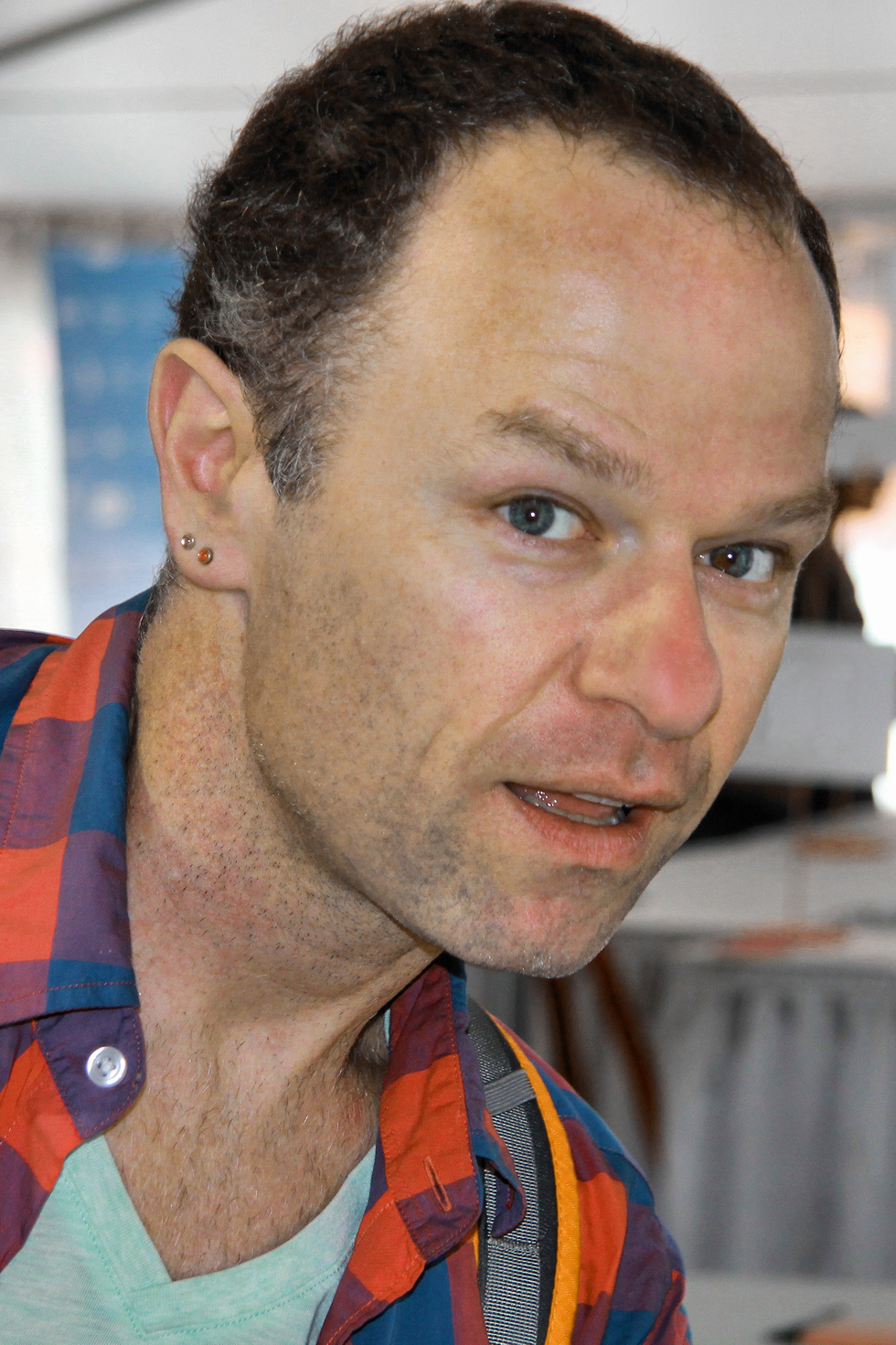BDSM is a variety of often erotic practices or roleplaying involving bondage, discipline, dominance and submission, sadomasochism, and other related interpersonal dynamics. Given the wide range of practices, some of which may be engaged in by people who do not consider themselves to be practising BDSM, inclusion in the BDSM community or subculture often is said to depend on self-identification and shared experience.
The initialism BDSM is first recorded in a Usenet post from 1991, and is interpreted as a combination of the abbreviations B/D (Bondage and Discipline), D/s (Dominance and submission), and S/M (Sadism and Masochism). BDSM is now used as a catch-all phrase covering a wide range of activities, forms of interpersonal relationships, and distinct subcultures. BDSM communities generally welcome anyone with a non-normative streak who identifies with the community; this may include cross-dressers, body modification enthusiasts, animal roleplayers, rubber fetishists, and others.

Activities and relationships in BDSM are often characterized by the participants’ taking on roles that are complementary and involve inequality of power; thus, the idea of informed consent of both the partners is essential. The terms submissive and dominant are often used to distinguish these roles: the dominant partner (“dom”) takes psychological control over the submissive (“sub”). The terms top and bottom are also used; the top is the instigator of an action while the bottom is the receiver of the action. The two sets of terms are subtly different: for example, someone may choose to act as bottom to another person, for example, by being whipped, purely recreationally, without any implication of being psychologically dominated, and submissives may be ordered to massage their dominant partners. Although the bottom carries out the action and the top receives it, they have not necessarily switched roles.
The abbreviations sub and dom are frequently used instead of submissive and dominant. Sometimes the female-specific terms mistress, domme, and dominatrix are used to describe a dominant woman, instead of the sometimes gender-neutral term dom. Individuals who change between top/dominant and bottom/submissive roles—whether from relationship to relationship or within a given relationship—are called switches. The precise definition of roles and self-identification is a common subject of debate among BDSM participants.

Fundamentals
BDSM is an umbrella term for certain kinds of erotic behavior between consenting adults, encompassing various subcultures. Terms for roles vary widely among the subcultures. Top and dominant are widely used for those partner(s) in the relationship or activity who are, respectively, the physically active or controlling participants. Bottom and submissive are widely used for those partner(s) in the relationship or activity who are, respectively, the physically receptive or controlled participants. The interaction between tops and bottoms—where physical or mental control of the bottom is surrendered to the top—is sometimes known as “power exchange”, whether in the context of an encounter or a relationship.
BDSM actions can often take place during a specific period of time agreed to by both parties, referred to as “play”, a “scene”, or a “session”. Participants usually derive pleasure from this, even though many of the practices—such as inflicting pain or humiliation or being restrained—would be unpleasant under other circumstances. Explicit sexual activity, such as sexual penetration, may occur within a session, but is not essential. For legal reasons, such explicit sexual interaction is seen only rarely in public play spaces and is sometimes banned by the rules of a party or playspace. Whether it is a public “playspace”—ranging from a party at an established community dungeon to a hosted play “zone” at a nightclub or social event—the parameters of allowance can vary. Some have a policy of panties/nipple sticker for women (underwear for men) and some allow full nudity with explicit sexual acts.
The fundamental principles for the exercise of BDSM require that it be performed with the informed consent of all parties. Since the 1980s, many practitioners and organizations have adopted the motto (originally from the statement of purpose of GMSMA—a gay SM activist organization) safe, sane and consensual (SSC), which means that everything is based on safe activities, that all participants are of sufficiently sound mind to consent, and that all participants do consent. Mutual consent makes a clear legal and ethical distinction between BDSM and such crimes as sexual assault and domestic violence.

Some BDSM practitioners prefer a code of behavior that differs from SSC. Described as “risk-aware consensual kink” (RACK), this code shows a preference for a style in which the individual responsibility of the involved parties is emphasized more strongly, with each participant being responsible for their own well-being. Advocates of RACK argue that SSC can hamper discussion of risk because no activity is truly “safe”, and that discussion of even low-risk possibilities is necessary for truly informed consent. They further argue that setting a discrete line between “safe” and “not-safe” activities ideologically denies consenting adults the right to evaluate risks versus rewards for themselves; that some adults will be drawn to certain activities regardless of the risk; and that BDSM play—particularly higher-risk play or edgeplay—should be treated with the same regard as extreme sports, with both respect and the demand that practitioners educate themselves and practice the higher-risk activities to decrease risk. RACK may be seen as focusing primarily upon awareness and informed consent, rather than accepted safe practices.
Consent is the most important criterion. The consent and compliance for a sadomasochistic situation can be granted only by people who can judge the potential results. For their consent, they must have relevant information (the extent to which the scene will go, potential risks, if a safeword will be used, what that is, and so on) at hand and the necessary mental capacity to judge. The resulting consent and understanding is occasionally summarized in a written “contract”, which is an agreement of what can and cannot take place.

BDSM play is usually structured such that it is possible for the consenting partner to withdraw their consent at any point during a scene; for example, by using a safeword that was agreed on in advance. Use of the agreed safeword (or occasionally a “safe symbol” such as dropping a ball or ringing a bell, especially when speech is restricted) is seen by some as an explicit withdrawal of consent. Failure to honor a safeword is considered serious misconduct and could constitute a crime, depending on the relevant law, since the bottom or top has explicitly revoked their consent to any actions that follow the use of the safeword. For other scenes, particularly in established relationships, a safeword may be agreed to signify a warning (“this is getting too intense”) rather than explicit withdrawal of consent; and a few choose not to use a safeword at all.
Terminology and subtypes
The initialism BDSM stands for:
• Bondage and discipline (B&D)
• Dominance and submission (D&s)
• Sadomasochism (or S&M)
These terms replaced sadomasochism, as they more broadly cover BDSM activities and focus on the submissive roles instead of psychological pain. The model is only an attempt at phenomenological differentiation. Individual tastes and preferences in the area of human sexuality may overlap among these areas.

Under the initialism BDSM, these psychological and physiological facets are also included:
• Male dominance
• Male submission
• Female dominance
• Female submission
The term bondage describes the practice of physical restraint. Bondage is usually, but not always, a sexual practice. While bondage is a very popular variation within the larger field of BDSM, it is nevertheless sometimes differentiated from the rest of this field. A 2015 study of over 1,000 Canadians showed that about half of all men held fantasies of bondage, and almost half of all women did as well. In a strict sense, bondage means binding the partner by tying their appendages together; for example, by the use of handcuffs or ropes, or by lashing their arms to an object. Bondage can also be achieved by spreading the appendages and fastening them with chains or ropes to a St. Andrew’s cross or spreader bars.
The term discipline describes psychological restraining, with the use of rules and punishment to control overt behavior.[citation needed] Punishment can be pain caused physically (such as caning), humiliation caused psychologically (such as a public flagellation) or loss of freedom caused physically (for example, chaining the submissive partner to the foot of a bed). Another aspect is the structured training of the bottom.
Dominance and submission (also known as D&s, Ds or D/s) is a set of behaviors, customs and rituals relating to the giving and accepting of control of one individual over another in an erotic or lifestyle context. It explores the more mental aspect of BDSM. This is also the case in many relationships not considering themselves as sadomasochistic; it is considered to be a part of BDSM if it is practiced purposefully. The range of its individual characteristics is thereby wide.
Often, BDSM contracts are set out in writing to record the formal consent of the parties to the power exchange, stating their common vision of the relationship dynamic. The purpose of this kind of agreement is primarily to encourage discussion and negotiation in advance and then to document that understanding for the benefit of all parties. Such documents have not been recognized as being legally binding, nor are they intended to be. These agreements are binding in the sense that the parties have the expectation that the negotiated rules will be followed. Often other friends and community members may witness the signing of such a document in a ceremony, and so parties violating their agreement can result in loss of face, respect or status with their friends in the community.
In general, as compared to conventional relationships, BDSM participants go to greater lengths to negotiate the important aspects of their relationships in advance, and to contribute significant effort toward learning about and following safe practices.
In D/s, the dominant is the top and the submissive is the bottom. In S/M, the sadist is usually the top and the masochist the bottom, but these roles are frequently more complicated or jumbled (as in the case of being dominant, masochists who may arrange for their submissive to carry out S/M activities on them). As in B/D, the declaration of the top/bottom may be required, though sadomasochists may also play without any power exchange at all, with both partners equally in control of the play.
Behavioral and physiological aspects
BDSM is commonly mistaken as being “all about pain”. Freud was confounded by the complexity and counterintuitiveness of practitioners’ doing things that are self-destructive and painful. Rather than pain, BDSM practitioners are primarily concerned with power, humiliation, and pleasure. The aspects of D/s and B/D may not include physical suffering at all, but include the sensations experienced by different emotions of the mind.
Of the three categories of BDSM, only sadomasochism specifically requires pain, but this is typically a means to an end, as a vehicle for feelings of humiliation, dominance, etc.[citation needed] In psychology, this aspect becomes a deviant behavior once the act of inflicting or experiencing pain becomes a substitute for or the main source of sexual pleasure. In its most extreme, the preoccupation on this kind of pleasure can lead participants to view humans as insensate means of sexual gratification.
Dominance and submission of power are an entirely different experience, and are not always psychologically associated with physical pain. Many BDSM activities involve no pain or humiliation, but just the exchange of power and control. During the activities, the participants may feel endorphin effects comparable to “runner’s high” and to the afterglow of orgasm. The corresponding trance-like mental state is also called subspace, for the submissive, and domspace, for the dominant. Some use body stress to describe this physiological sensation. The experience of algolagnia is important, but is not the only motivation for many BDSM practitioners. The philosopher Edmund Burke called the sensation of pleasure derived from pain “sublime”. Couples engaging in consensual BDSM tend to show hormonal changes that indicate decreases in stress and increases in emotional bonding.
There is an array of BDSM practitioners who take part in sessions in which they do not receive any personal gratification. They enter such situations solely with the intention to allow their partners to indulge their own needs or fetishes. Professional dominants do this in exchange for money, but non-professionals do it for the sake of their partners.

In some BDSM sessions, the top exposes the bottom to a range of sensual experiences, such as pinching; biting; scratching with fingernails; erotic spanking; erotic electrostimulation; and the use of crops, whips, liquid wax, ice cubes, and Wartenberg wheels. Fixation by handcuffs, ropes, or chains may occur. The repertoire of possible “toys” is limited only by the imagination of both partners. To some extent, everyday items, such as clothespins, wooden spoons, and plastic wrap, are used in sex play. It is commonly considered that a pleasurable BDSM experience during a session depends strongly on the top’s competence and experience and the bottom’s physical and mental state. Trust and sexual arousal help the partners enter a shared mindset.
Types of play
Following are some of the types of BDSM play:
• Animal roleplay
• Breast torture
• Cock and ball torture
• Erotic electrostimulation
• Edgeplay
• Flogging
• Urolagnia
• Human furniture
• Japanese bondage
• Medical play
• Paraphilic infantilism
• Play piercing
• Predicament bondage
• Pussy torture
• Salirophilia
• Sexual roleplay
• Spanking
• Suspension
• Tickle torture
• Wax play





![DDSC-035 縄悶 JOU-MON [SCRUM]](https://bdsmwild.com/wp-content/uploads/2023/12/01203-ddsc035-bdsmwild-SCRUM-DDSC-035-縄悶-JOU-MON.webp)

![BA-039 Virginity Loss in Bondage Rina Matsumoto 緊縛処女喪失 松本りな [CineMagic]](https://bdsmwild.com/wp-content/uploads/2023/08/00775-ba039-bdsmwild-CineMagicBA-039-緊縛処女喪失-松本りな.webp)


![MOX-17 ねこ&アリス 襲われた女 [危機に陥った女たち] 水嶋アリス 愛乃ねこ [DID企画]](https://bdsmwild.com/wp-content/uploads/2024/06/01927-bdsmwild-DID企画-MOX-17-ねこ&アリス-襲われた女-危機に陥った女たち-水嶋アリス-愛乃ねこ.jpeg)
